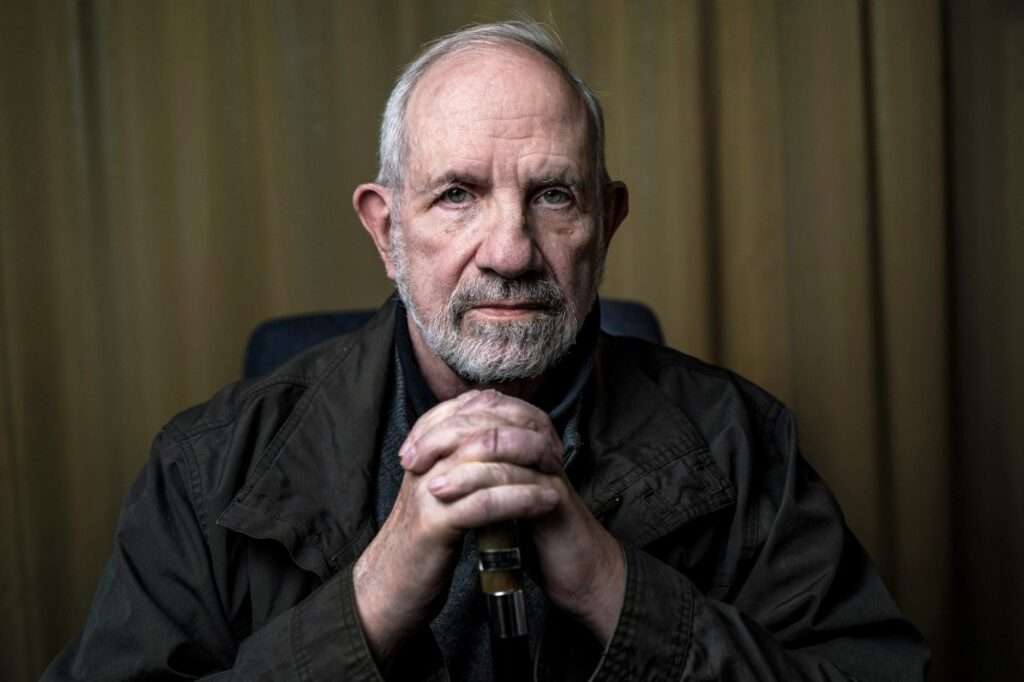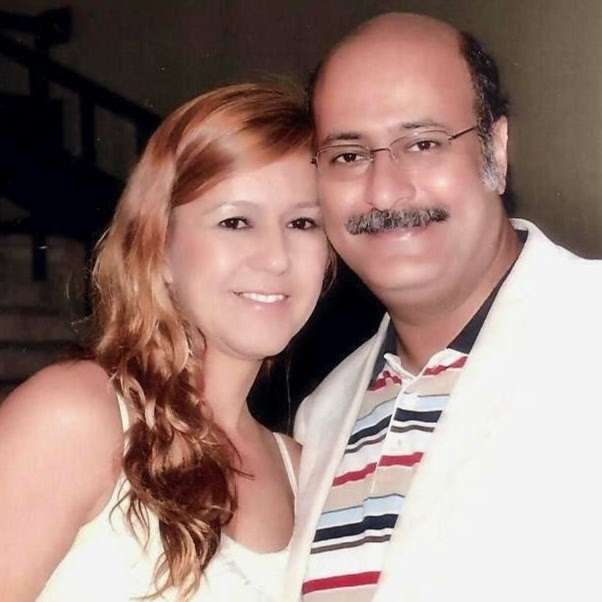
Brian De Palma's name is synonymous with suspense in the world of cinema, and a significant part of his mastery lies in his unique use of cameraworks. In this exploration of "suspense through cameraworks," we delve into the mind of a filmmaker who has mastered the art of keeping audiences on the edge of their seats. De Palma's films are a case study in the power of visual storytelling, and his camerawork techniques are the brushstrokes that paint vivid suspense on the screen.
Overview of Brian De Palma's Style
Brian De Palma is a filmmaker known for his ability to create intense suspense and psychological tension through his distinctive cinematic style. Over the years, he has become renowned for his meticulous attention to detail and his innovative use of cameraworks to heighten the audience's sense of unease. De Palma's films often feature complex tracking shots, split-screen sequences, and point-of-view shots, all of which contribute to the creation of suspense.
One of the hallmarks of De Palma's style is his deliberate pacing. He takes his time to build tension, allowing the audience to become fully immersed in the unfolding narrative. This deliberate approach, combined with his camerawork techniques, results in a palpable sense of anticipation that keeps viewers on the edge of their seats.
Camera Techniques for Suspense
Brian De Palma's camerawork techniques are a key element in his ability to generate suspense. Let's take a closer look at some of the camera techniques he frequently employs:
1. Tracking Shots
De Palma is a master of the tracking shot, a technique in which the camera follows the action smoothly and seamlessly. These extended tracking shots are often used to create a sense of voyeurism, as if the audience is surreptitiously observing the characters. In films like "Blow Out," De Palma's tracking shots contribute to the feeling of being inescapably drawn into the unfolding mystery.
2. Split-Screen
The split-screen technique is another signature move in De Palma's toolbox. He uses it to juxtapose multiple events or perspectives within the same frame, intensifying the audience's sense of impending doom. This technique is prominently featured in "Carrie" during the climactic prom scene, where the audience witnesses both the horror unfolding and the stunned reactions of the onlookers simultaneously.
3. Point-of-View (POV) Shots
De Palma's use of POV shots is particularly effective in putting the audience in the shoes of the characters. By seeing events from a character's perspective, viewers become emotionally invested and experience the tension firsthand. This is evident in "Body Double," where De Palma's use of POV shots adds an extra layer of suspense to the narrative.
These are just a few examples of the camerawork techniques that Brian De Palma employs to create suspense in his films. What sets him apart is his ability to use these techniques judiciously, knowing precisely when to deploy them for maximum impact.
Use of Cinematic Elements
While camerawork plays a crucial role in Brian De Palma's suspense-building toolkit, it's essential to recognize that he doesn't rely on it in isolation. He skillfully combines camera movements with other cinematic elements to amplify the tension.
1. Lighting
De Palma understands the significance of lighting in setting the mood. His films often feature stark contrasts between light and shadow, creating an atmosphere of uncertainty and danger. The interplay of light and dark enhances the visual impact of his camerawork and adds depth to the narrative.
2. Music and Sound Design
The auditory aspect of De Palma's films is equally important. He collaborates with talented composers and sound designers to craft scores and soundscapes that intensify the suspense. The choice of music and the timing of sound cues are meticulously calibrated to enhance the emotional impact of key scenes.
These cinematic elements, when combined with De Palma's camerawork, create a multi-sensory experience that immerses the audience in the world of the film and keeps them gripped by the unfolding events.
Comparison with Other Directors
To truly appreciate Brian De Palma's prowess in creating suspense through camerawork, it's insightful to compare his approach with that of other renowned directors, especially those in the thriller genre.
One of the directors frequently mentioned in the same breath as De Palma is Alfred Hitchcock, the master of suspense himself. Hitchcock's films, such as "Psycho" and "Rear Window," are celebrated for their ability to generate tension. While Hitchcock and De Palma share a penchant for suspense, their styles are distinct. Hitchcock relies on meticulous framing and editing, often using suspenseful motifs, while De Palma favors long, immersive tracking shots that draw the audience into the action.
Another contemporary director who has drawn inspiration from Brian De Palma's work is David Fincher. Films like "Se7en" and "Gone Girl" showcase Fincher's use of camerawork and editing techniques to build suspense. While Fincher's style differs from De Palma's in some aspects, they both excel in creating tension through visuals and pacing.
These comparisons highlight the diversity of approaches to suspense in cinema, with each director bringing their unique style and techniques to the genre. Brian De Palma's contributions, particularly in the realm of camerawork, continue to be a source of fascination and admiration among filmmakers and cinephiles alike.
Case Studies
To illustrate the effectiveness of Brian De Palma's camerawork techniques in building suspense, let's dive into a few case studies from his films.
Case Study 1: "Dressed to Kill"
In "Dressed to Kill," De Palma employs a series of tracking shots during a pivotal museum scene. The camera glides smoothly through the museum's halls, creating a sense of foreboding as the audience anticipates an imminent encounter between the protagonist and the antagonist. This extended tracking shot not only builds suspense but also serves as a visual metaphor for the characters' cat-and-mouse game.
Case Study 2: "Blow Out"
"Blow Out" is a prime example of De Palma's mastery of the split-screen technique. During the film's climactic sequence, the split-screen is used to simultaneously show the protagonist's efforts to uncover a conspiracy and the unfolding tragedy. This technique intensifies the suspense as viewers are forced to confront multiple events happening in real-time, creating a sense of helplessness and urgency.
Case Study 3: "Body Double"
In "Body Double," De Palma employs POV shots to great effect. The audience experiences the protagonist's voyeuristic perspective as he observes a woman from a distance. This subjective viewpoint not only enhances the suspense but also blurs the line between the audience and the character, making them complicit in the unfolding narrative.
These case studies showcase how Brian De Palma strategically uses camerawork techniques to immerse the audience in the suspenseful world of his films. Each shot is carefully orchestrated to maximize tension and create a lasting impact on viewers.
Critical Reception
Brian De Palma's films have garnered both critical acclaim and controversy, and his use of camerawork to create suspense has been a topic of discussion among film scholars and enthusiasts.
Critics have often praised De Palma's meticulous attention to detail and his ability to build tension through visuals. His films are known for their visual flair, and his innovative camerawork techniques are frequently cited as a highlight. Critics and audiences alike have recognized that De Palma's approach to suspense sets him apart in the realm of psychological thrillers.
However, De Palma's work has not been without controversy. Some have criticized him for what they perceive as excessive use of violence and eroticism. Nonetheless, even his critics acknowledge his technical skill and ability to generate suspense.
Legacy and Influence
Brian De Palma's legacy in the world of cinema is undeniable, and his influence on contemporary filmmakers is profound. Directors who have followed in his footsteps have often cited him as a source of inspiration.
David Fincher, known for his meticulous approach to filmmaking, has openly acknowledged De Palma's influence on his work. Fincher's films, such as "Se7en" and "Fight Club," bear the mark of De Palma's suspense-building techniques, including the use of tracking shots and precise framing.
Quentin Tarantino, another director renowned for his unique style, has also expressed his admiration for De Palma. Tarantino's films often feature unconventional storytelling and suspenseful sequences that draw from De Palma's innovative camerawork.
In essence, Brian De Palma's contribution to the world of cinema extends beyond his own films. His techniques and approaches to suspense through camerawork have become part of the cinematic lexicon, inspiring a new generation of filmmakers to explore the boundaries of visual storytelling.
Conclusion
In the world of psychological thrillers, Brian De Palma's ability to create suspense through cameraworks stands as a testament to his filmmaking genius. His innovative techniques, from tracking shots to split-screens, have left an indelible mark on the genre. As we revisit his films, we continue to appreciate the artistry that lies in every frame and the palpable tension he weaves into his narratives. The next time you find yourself on the edge of your seat during a thriller, remember the name Brian De Palma, a master of suspense through cameraworks.
FAQ
Q1: Which Brian De Palma film is considered his ultimate masterpiece for suspense through cameraworks?
A1: While opinions may vary, many consider "Dressed to Kill" to be one of De Palma's ultimate masterpieces in terms of suspenseful camerawork. The film showcases his innovative use of camera techniques to build tension throughout the narrative.
Q2: How has Brian De Palma's camerawork influenced modern filmmakers?
A2: Brian De Palma's use of camerawork to create suspense has had a profound influence on modern filmmakers, particularly in the thriller genre. Directors like David Fincher and Quentin Tarantino have drawn inspiration from his techniques, incorporating them into their own works.
Q3: Can you recommend some other classic psychological thrillers with suspenseful camerawork?
A3: Certainly! Apart from De Palma's films, consider watching Alfred Hitchcock's "Vertigo" and David Fincher's "Se7en." These films are known for their masterful use of camerawork to create suspense and intrigue.
